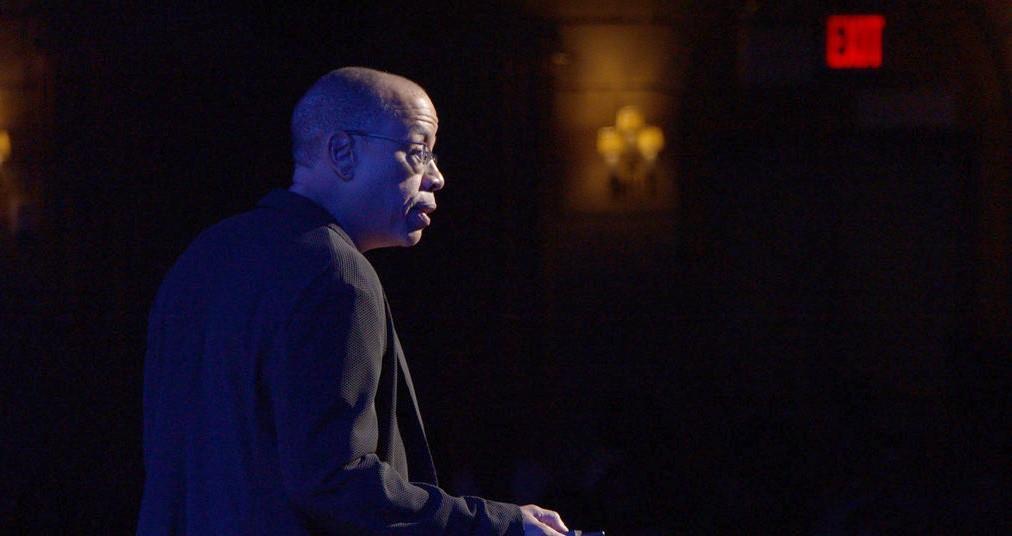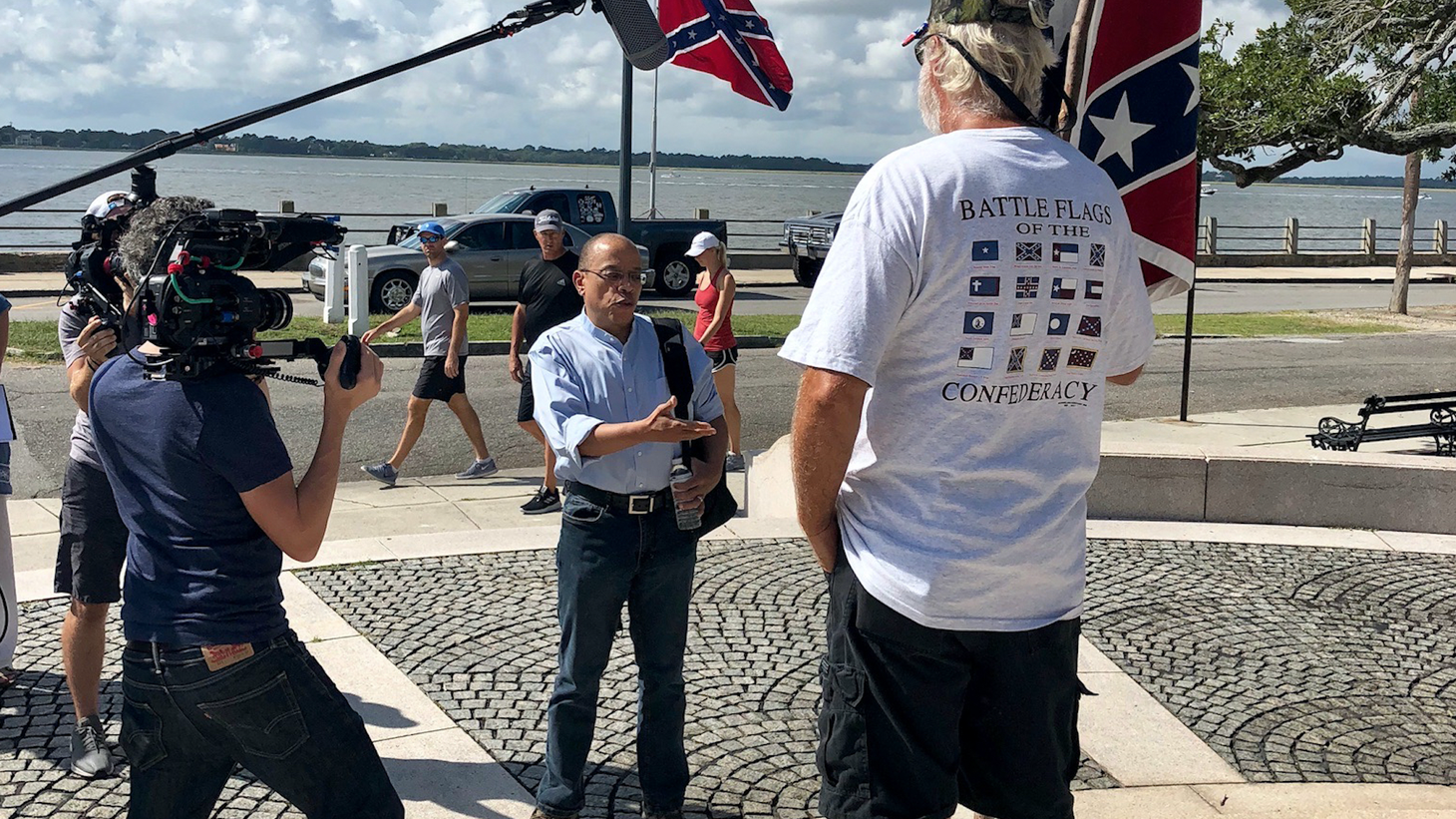
The last couple of times I’ve stopped off in Charleston, S.C. on my frequent road trips up and down the Eastern seaboard, I’ve seen this guy.
He’s an older fellow with a stars-and-bars bedecked pickup, making sure he and his T-shirt and Confederate apologia are where one and all can see him, right there on the park/shoreline of the battery where the first shots of the Civil War were fired.
If you’re white and grew up in the South and don’t share his politics, Braxton Spivey is the sort of redneck crank you make it a point to avoid. I can only imagine an African American’s reaction to him, as he’s obviously here to intimidate, send a message, and make Savannah a much more inviting stop that Charleston (for me) among scenic Southern coastal cities.
We only know his name because Jefferey Robinson, the Memphis native/Ivy League-educated deputy legal defense director of the American Civil Liberties Union, engaged him in a chat for his new documentary, “Who We Are: A Chronicle of Racism in America.”
Their encounter isn’t a “Look at the smart Black man ‘own’ the racist dunce” moment. It’s a soft-voiced but forceful evisceration, witness-on-the-stand style, of “Flags Across the South” president Spivey’s laughable Civil War view that “It was not about slavery.”
Robinson patiently asks questions, offers reasonable factual refutations with an “Isn’t THAT right?” and “Wouldn’t you agree with that?” He’s not getting very far in the whole “common ground” thing. But he’s working on it, talking about the economics and tariffs that Spivey insists were instigations for the war. Robinson wends his way towards showing how the entire economy of the South, and much more than you realize of the North, was tied up in slavery, the balance sheets of vast quantities of free labor needed to harvest cotton, tobacco and rice, the whole ecosystem of ship building and runaway slave recovery.
“Facts were not that important to this gentleman,” Robinson says upon departing. He doesn’t know if people this far down the lie of “heritage, not hate” “can be reached.” But “If nobody tries, he definitely won’t change.”
“Who We Are” never uses the conservative scare phrase “critical race theory.” But that’s what this illuminating, damning and sometimes touching film is — “Critical Race Theory” delivered as a sort of TED Talk.
Robinson uses illustrations, graphics and rhetoric to tell the story of Race in America. He travels to landmarks in the racial history of the country — Charleston, Memphis, Selma and Tulsa.
His lecture is about America’s various “tipping point” moments, when racial progress and harmony might seem possible, and the violent convulsions that always seem to move the country backward. The Civil Rights Era collapses when the Rev. Martin Luther King, Jr. is murdered. Donald Trump comes to power in reaction to America electing its first African-American president.
Robinson tells his own story, and white classmates from his days in Memphis in the late ’60s remind him of racist incidents that happened to him or around him that he doesn’t even remember.
He delves into “unconscious bias” and tears a huge hole in the arguments against “reparations” to remedy hundreds of years of economic disparity and racist blowback against Black achievement.
Yes, he visits the empty fields where “The Black Wall Street” once stood, massacred out of existence in Tulsa, Oklahoma in 1921. He meets with survivors of those killed by police violence, the descendants of lynching victims, and walks the infamous Edmund Pettus Bridge, which activists want renamed.
And he gets into the origins of Black mistrust of police and police abuse of Black people, which dates back to how most of America’s police departments were founded, as outgrowths of “slave patrols” of the late 18th and early 19th centuries.


Robinson’s purpose here is to cut through the lies, propaganda and rhetoric and look at what all those folks so anxious to ban and even burn books are trying to cover up.
He touches on the voter suppression that is today’s version of the oppression that was written into the Constitution, where “slavery” is only mentioned by its name once.
And he provides fodder for anybody who finds themselves in the middle of “Confederate monument” debates, noting what this or that celebrated figure in Tennessee or elsewhere actually did before the war, and then during it, participating in the slaughter of their fellow Americans to preserve a “peculiar institution” that remains America’s shame to this day.
Robinson’s fact-backed reason is never contrasted with the spittle-spewing rage and hate we’ve seen on so many news reports in recent years. But those fact-averse tirages are never far from the viewer’s mind in “Who We Are.”
It’s an eye-opening documentary. But reviewing it, one feels the need to add a footnote. With racist minoritarian take-overs of school boards, county commissions and the like heralding a “New Jim Crow” South, and even Midwest and parts of the Northeast, you’d better see it while you still can.
Rating: PG-13 for thematic content, disturbing images, violence and strong language – all involving racism
Cast: Jeffery Robinson, Josephine Bolling McCall, Carolyn Payne, Tami Sawyer, Braxton Spivey and Gwynn Carr.
Credits: Directed by Emily Kunstler and Sarah Kunstler, scripted by Jeffery Robinson. A Sony Pictures Classics release.
Running time: 1:57

